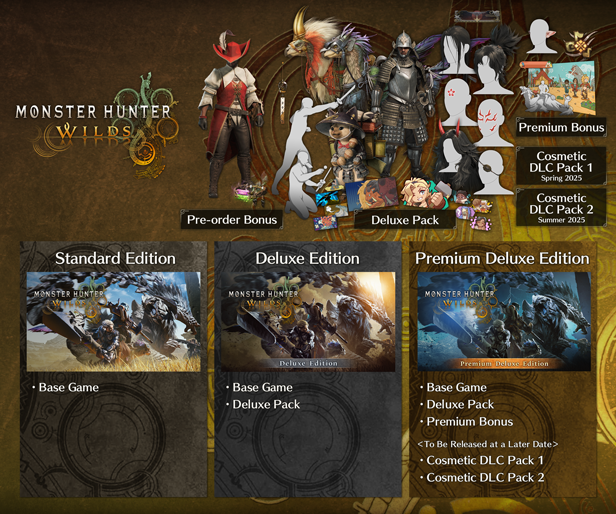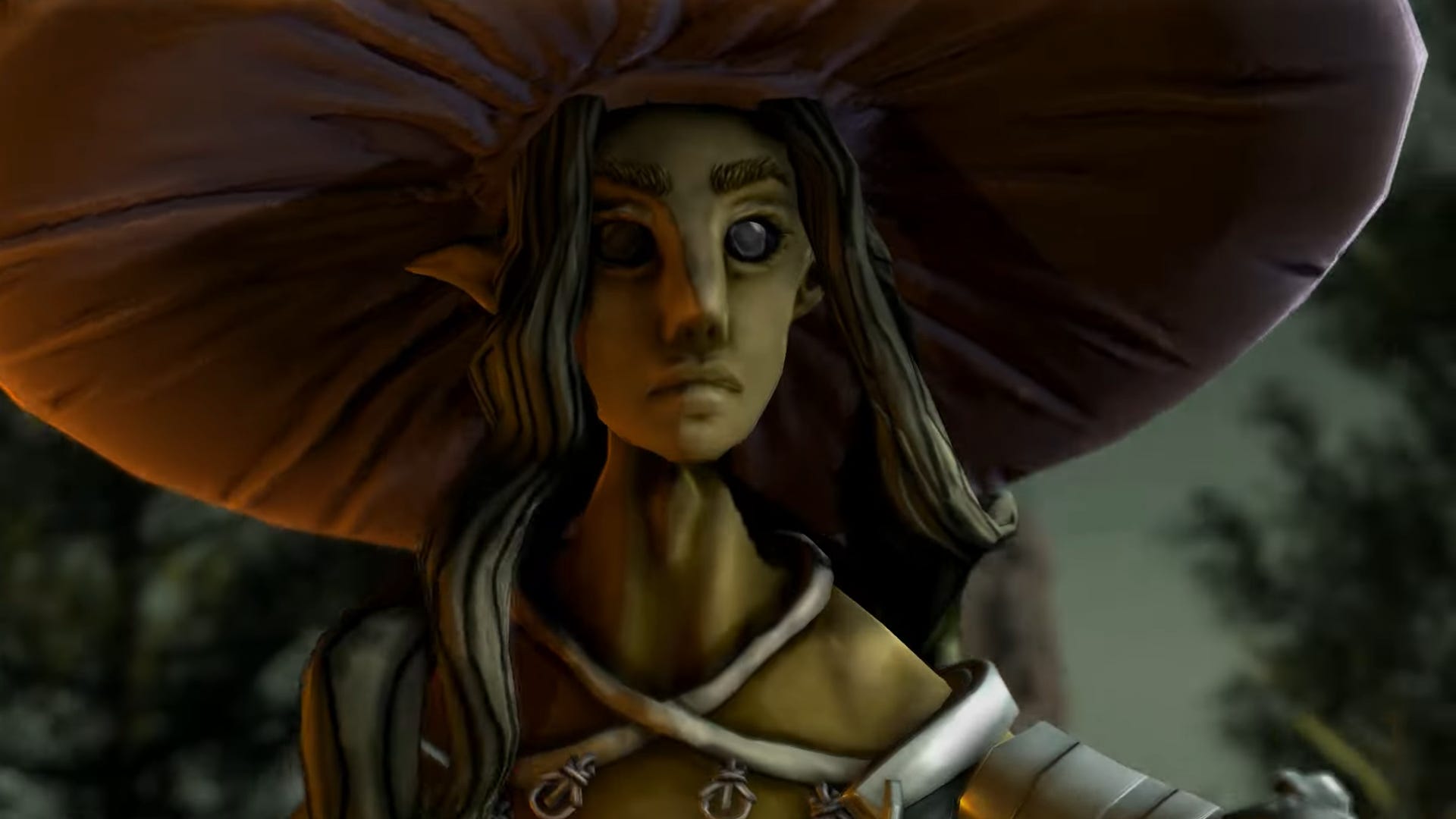Let’s get this one out of the way: Hell is Us isn’t a soulslike. Nor is it an open-world game. Instead, it aims to separate itself from other action adventures by emphasising investigation and discovery, ushering you to get lost in its weirdness. That’s exactly what happened to me during my two-hour hands-on with developer Rogue Factor’s latest, an arresting mixture of medieval and sci-fi aesthetics set against a 90s European civil war backdrop. I enjoyed its approach to tense melee combat encounters and information-gathering puzzles, but what excites me the most is what I don’t know – where its intriguing story will lead me next.
Hell is Us is one of the bleaker games I’ve played in a while. Upon entering a village surrounded by muddy marshland, I’m greeted by a mass grave, bodies hanging from a tree, and the yearnful strings of a local’s violins. You’ll become used to such scenes during the early hours of venturing through the fictional European nation of Hadea, circa an alternate 1990s. It’s a country ravaged by civil war that has cut itself off from the rest of the world, and the place that main character Rémi fled as a child. Fast forward years later and he’s back in his homeland having smuggled himself over the border in search of the parents who sent him off for a better life.
The first step of the mystery brings me to a lonely farmhouse, the basement of which the owner now calls home. Through conversation about my father and the larger conflict at play, I’m able to pull on a thread that eventually reveals the village of Jova as his last known location. Hell is Us wants you to take your time talking to people and investigating every avenue of conversation. Indeed, being a wandering detective appears to be as much a part of its gameplay as its punishing combat (more on that in a bit). It forces you to observe its world and the people trapped in it. You are deprived of map markers, waypoints, and – thanks to that 90s setting – a mobile phone. Instead of those tools, you are reliant on directions and clues given by mouth or read on scattered notes.
In order to reach Jova I’ll need a vehicle, and it just so happens that a military APC is parked nearby. Retrieving its engine’s lost key appears a simple fetch quest at first, but Hell is Us’ emphasis on investigation means this task quickly reveals itself to be a much more complex problem. I talk to a wounded soldier who gives me rough directions through a forest, which in turn leads me to a puzzle where I need to match symbols on a door using a contraption. The gateway unlocked, I then delve deep into the tomb inside. This is where things get weird.
Foes take the form of milky white humanoids that move slowly yet menacingly, echoing images from the finale of Annihilation.During a conversation at gamescom 2024, creative director Jonathan Jacques-Belletête revealed to me the influence that Annihilation plays on Hell is Us. The team has been inspired not just by the visuals of Alex Garland’s striking 2018 film, but also the overall off-kilter tone of Jeff VanderMeer’s trilogy of novels it’s based on. It can be heard in the unsettling score that soundtracks Hadea, filled with droning, stuttering electronics and twinkling otherworldliness, but becomes much more evident when you’re face-to-face with enemies.
The basic foes take the form of milky white humanoids that move slowly yet menacingly, echoing images from the finale of Garland’s movie. Others are more developed quadrupeds that possess blades for limbs that slice at you if you get too close – I couldn’t help but think of the necromorphs that haunt Dead Space’s corridors when faced with them. But the horrors don’t end there. In fact, they’re hidden around every tight corner and in every open field. This is best exemplified near the end of my demo as I venture far too near a giant shimmering blob of spiking goo and wavy ribbing. It’s a hard thing to try and describe in words, and in turn quite unlike anything else I’ve ever seen.
So far it all sounds very sci-fi horror, but that’s just one side of Hell is Us’ coin, because the way you deal with these threats is thoroughly medieval fantasy. I quickly discover that standard weapons have no effect on them, but thankfully soon receive a glowing white sword that’s much more effective. Alongside a standard mix of dodging and blocking, you can slice at enemies with both standard and charged heavy attacks. At its core it’s a relatively basic melee combat system that I found fairly unforgiving at times (though never unfair,) but more wrinkles do reveal themselves over time. Recovery items are scarce, so you’ll largely be relying on the smart “healing pulse” system, which is triggered by hitting the right bumper button when a burst of particles emerges from an enemy after hitting them. It encourages aggression when playing, and kept me on the front foot when searching for a health top-up, just as some of my favourite action-heavy games like Control and Doom Eternal do.
This doesn’t mean you can go in all blades blazing, however, as the length of your stamina bar is directly linked to the amount of health you have left. This means you can only get a hit or two in when near death before needing to hang back and rest a moment. Should you find yourself in need of a helping hand, you can call upon your drone companion who, among other abilities, can distract enemies while you sneak up on them for a critical hit. This isn’t necessarily a stealth game, but it’s nice to know the option is there.
Alongside special attacks, these systems all combine to create a tense dance in each combat encounter that’s a consistent thrill to navigate through, especially when faced with more complex threats. A prime example of such foes are those connected to glowing, pulsating entities that are colour-coded depending on the type of attack they use. For example, the red ones plow into you, whereas the yellow ones attack from range. Deal enough damage to them and they’ll retreat into their fleshier counterparts and make them vulnerable.
During my playtime, I also got my hands on several other weapons, too, such as a very cool pair of twin axes that unleashed flurries of charged attacks, and a hulking polearm that delivered slow but heavy hits. The latter seemed an entirely optional find, too, unlocked by collecting a series of ancient medallions and slotting them into a side door hidden in the catacombs. It’s nice to see the investigation side of the game leading to new treasures and cleverly integrated into these open zone areas, rather than just being there to reveal story information.
Of course, this combat is what stands between Rémi and him being reunited with his father. That connection will remain lost for the time being, however, as upon arriving in Jova it is revealed that he left town with the global peacekeeping forces. The journey continues and the next stage of the investigation is underway as I wander around speaking to weary, sometimes dismissive, villagers. There’s obviously some deeper mystery at play too, as alien languages and arresting sci-fi gothic architecture lurk underground, waiting to emerge and reveal their secrets. It’s worth noting that Hell is Us is striking throughout, no coincidence when you consider Jacques-Belletête was an art director of both Deus Ex: Human Revolution and Mankind Divided – two games that have stood the test of time incredibly well from a stylistic perspective.
It’s this willingness to just get a bit weird that makes me so encouraged by what I’ve played of Hell is Us. Its 90s setting and appropriate lack of modern technology is not only a vehicle to encourage genuine exploration, but also feels like a throwback to a decade where games held your hand a little more loosely. I, for one, welcome it, and look forward to seeing where Hell is Us leads me to next.
Simon Cardy is also up for wallowing in bleakness. Follow him on Twitter at @CardySimon.











